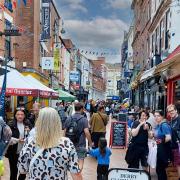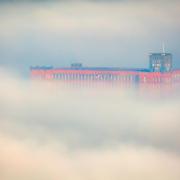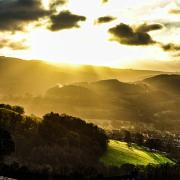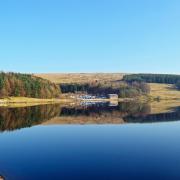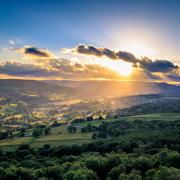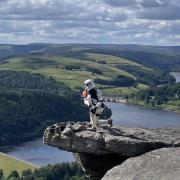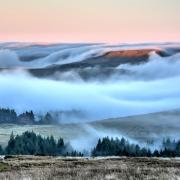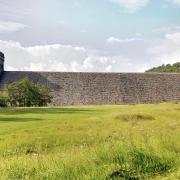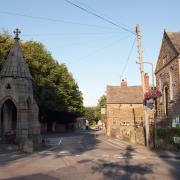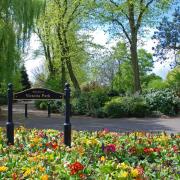Chesterfield’s famous Crooked Spire is one of Derbyshire’s most talked about and frequently-discussed structure.
It is by this title that this centuries-old building is almost universally known, rather than its official title – St. Mary and All Saints Church.
Wherever you approach Derbyshire's largest town from, the Crooked Spire dominates the skyline.
It’s true that this would be the case were it perpendicular, but its unique off-straight features immediately draws the eye, stirring curiosity, mystique and intrigue in equal measure.
Get up close and it is as imposing as it is impressive. You also begin to appreciate that the spire is merely the focal point of a large and proud Grade I-listed structure.
The church stands imperiously amid the hustle and bustle of north east Derbyshire life. It shares its immediate sphere with the roads, shops and walkways that surround it. You suspect that, in centuries gone by, this impressive landmark would not have had to fight for attention – but it is no poorer for it in 2021.
The spire itself was constructed around 1362 in a move which, unbeknown at the time, would secure the church’s long-term legacy.
As work started, it’s safe to assume those working on the project could not have ever imagined their efforts would still be talked about all these hundreds of years later.
Neither could they have understood just how symbolic the spire would become, nor how synonymous it would be with the town of Chesterfield.
There has been much conjecture over the years as to why the spire is crooked – it certainly wasn’t designed to be so.
READ MORE: Chesterfield - Derbyshire’s ‘second city’

Strictly speaking, though, it isn’t crooked. It is, in the words of Chesterfield Museum, ‘twisted and leaning’ - twisting 45 degrees and leaning nine foot, six inches from its true and natural centre.
Small margins, relatively speaking, but enough to ensure this church, the largest in Derbyshire, is known far beyond the county’s borders.
The most plausible (and arguably least interesting) explanation for this peculiar architectural delight is the use of unseasoned wood during its construction.
In language that no doubt makes complete sense to architects and builders, it is also noted that there is a lack of cross bracing in the structure.
Another fascinating element, which presumably goes hand in hand with the aforementioned theory, related to a significant part of our social history.
The construction of the spire occurred at a time when the country – and the county of Derbyshire – had been ravaged by a brutal episode of the ‘Black Death.’
This has led to suggestions that there could well have been a dearth in skilled, experienced labour, which may have resulted in less than ideal practices that wouldn’t have been an issue prior to the pandemic.
Of course, such plausible theories based in fact have not discouraged numerous theories as to how the spire at St. Mary and All Saints Church came to be crooked – many of which have gone down in folklore.
Some are credible, some humorous, some fanciful while others offer a fascinating glimpse into the psyche of local people at the time.
Varied and wide ranging, one thing that all these theories share in common is that they are nothing if not entertaining.
Here are a few of them.

Here comes the sun
One of the more realistic suggestions proposed is that the introduction of 32-tonnes of heavy lead caused the spire to tilt. The additional argument is that the sun shining on the south side warms the tower, making the lead expand quicker than on the north side, and the newly-leaded spire simply could not bear the bulk – especially given the shortcomings of the original wood installation.
Given the lead was added some time later, it opens up the fascinating possibility that, in its early years, the spire was in fact straight, as originally intended.
The virgin bride
This is probably the point where we introduce the famous line ‘legend has it...’ into the mix.
One theory exists that the spire, surprised, turned to look at a virgin bride, who was getting married in the church. It’s suggested that the spire will return to its perpendicular state when another virgin bride is married at St. Mary and All Saints.
The respectful bow
A slightly modified version of the above exists, where it is claimed the spire twisted and bowed in admiration and respect for a ‘maiden of great beauty’ as she entered the church, only to find it could not move from its new-found position.

The devil
Several theories exist which have the devil as chief protagonist. Perhaps the most well-known is the suggestion that the mischievous devil wrapped his tale around the spire. The church bells were duly rung to startle the unwelcomed guest and, while this strategy worked, the damage left as the devil made its flustered getaway was there for all to see.
A further devil-inspired story suggests that a magician persuaded a local blacksmith to ‘shoe’ the devil. Terrified at the prospect of angering the devil by booting him, he unintentionally drove a nail into the devil’s foot – causing it to flee in agony, but not before catching the spire as it made its escape and forever changing its structure.
Whatever the cause of the church’s famous crooked spire, its influence over Chesterfield and the county is undeniable.
It is also a story of resilience. Twice the church has survived serious fires, occurring nearly 100 years apart – the most recent time occurring on December 22 1961 as an electrical fault caused the spire to be engulfed in flames.
The history of the church, and the fascinating items and stories to be found within its four walls, is worthy of a feature all on its own.
Will we ever unequivocally know why the spire is so devilishly crooked? Probably not.







